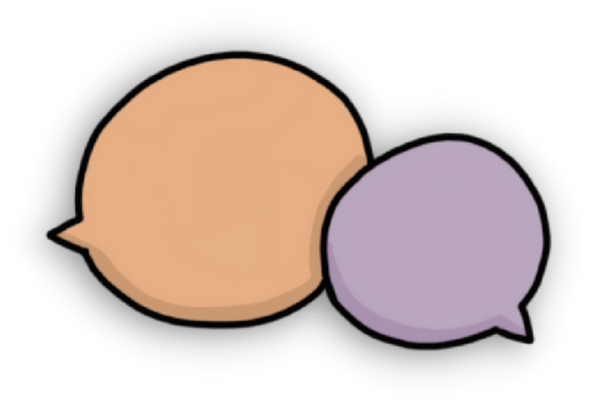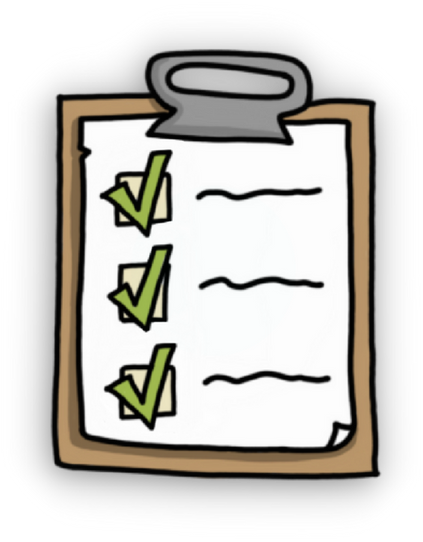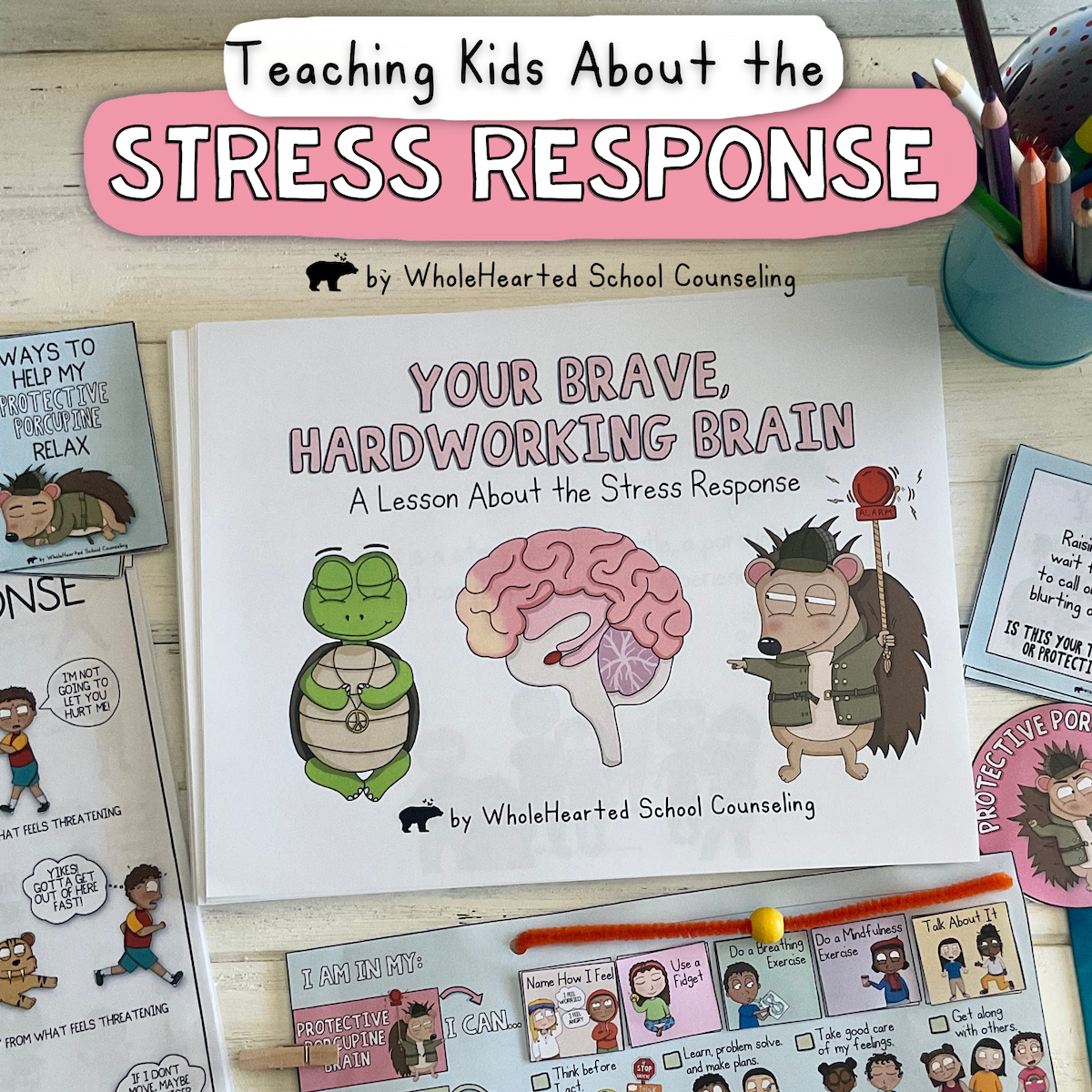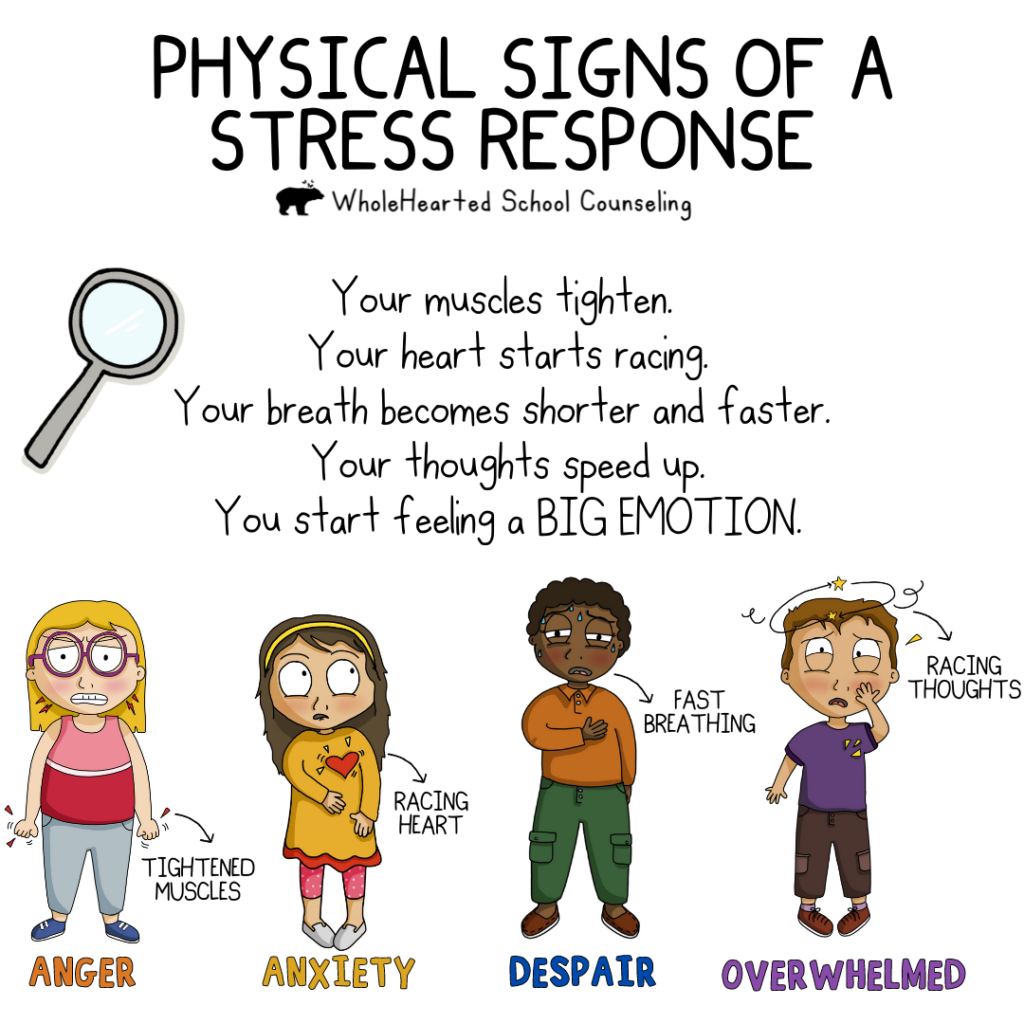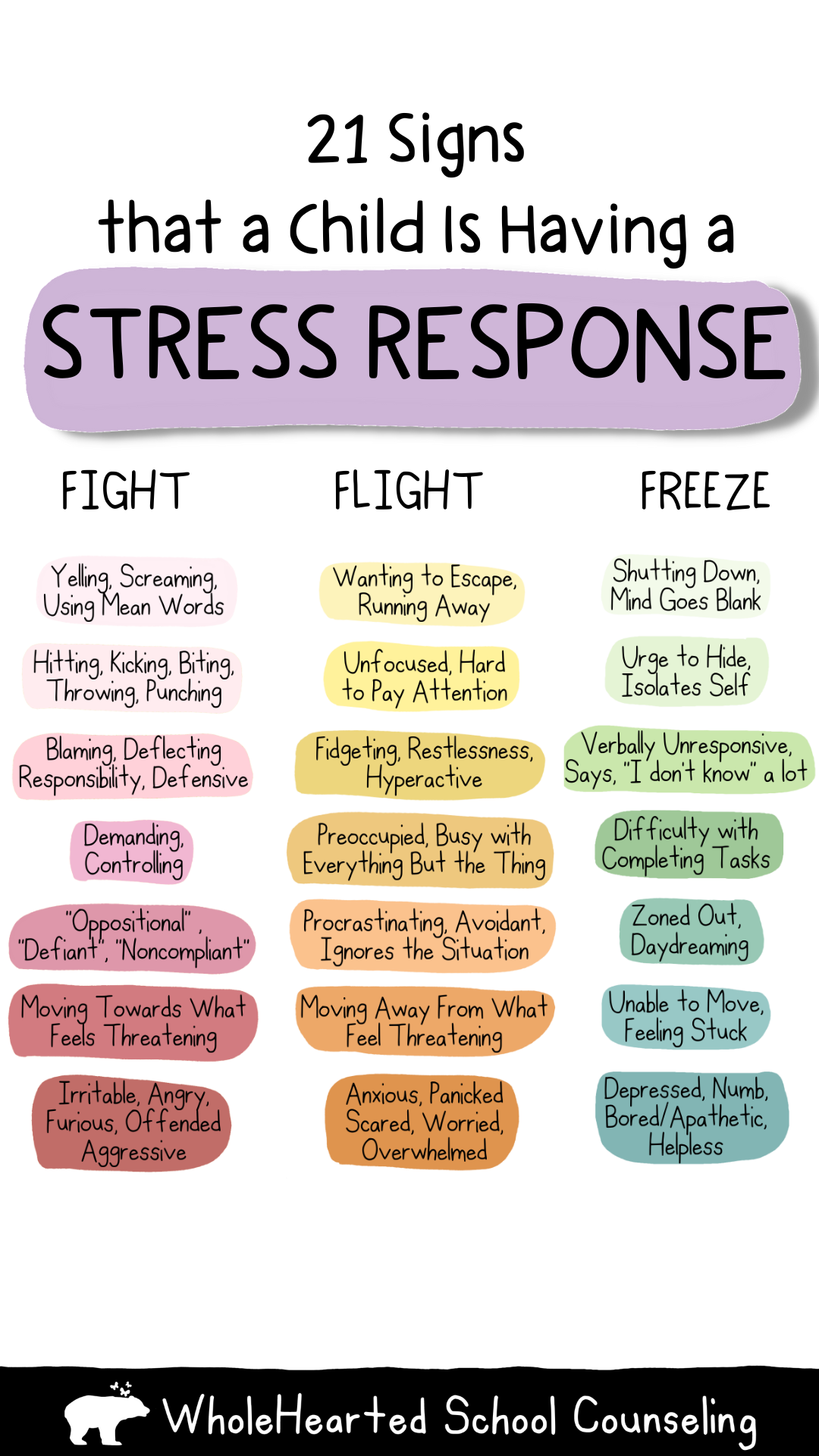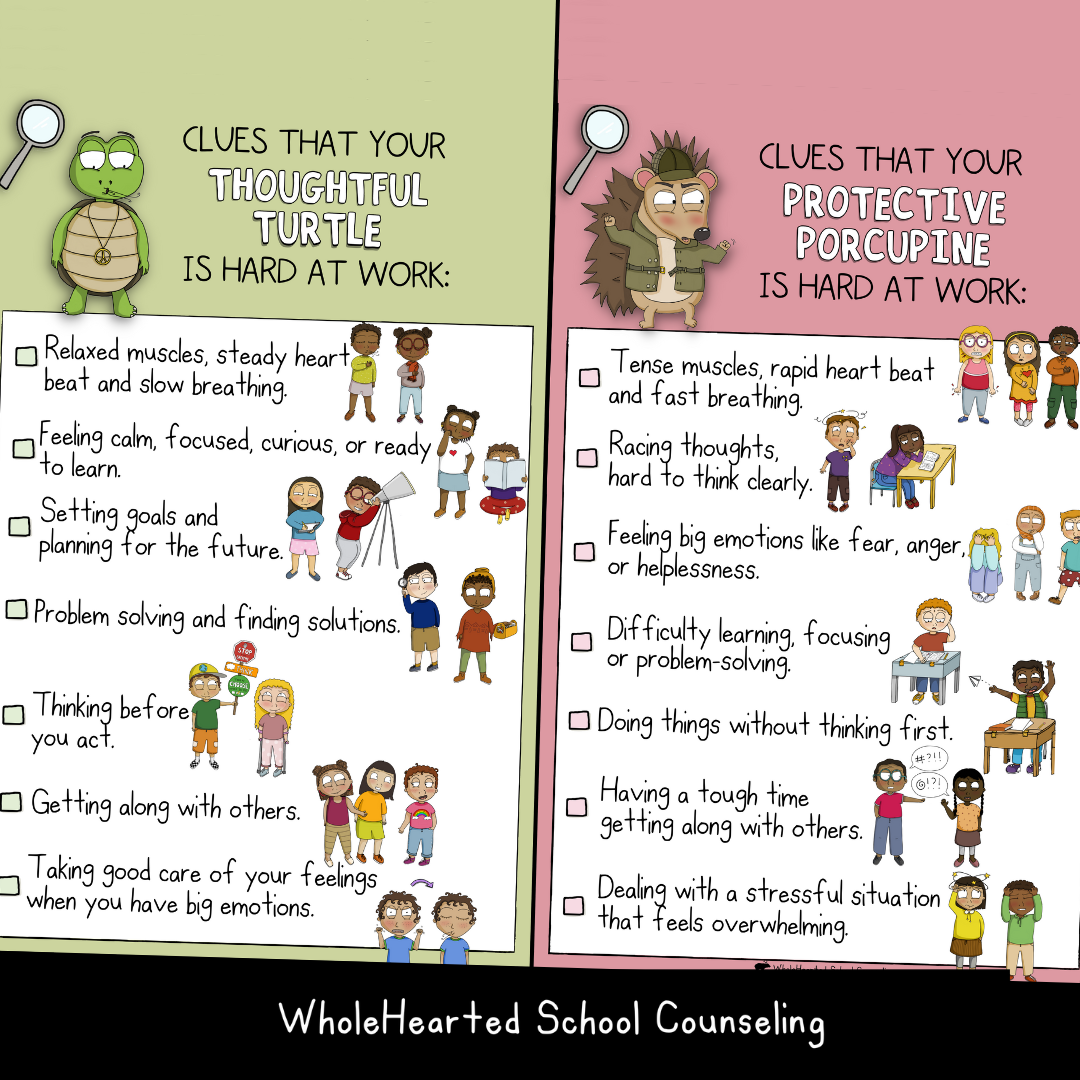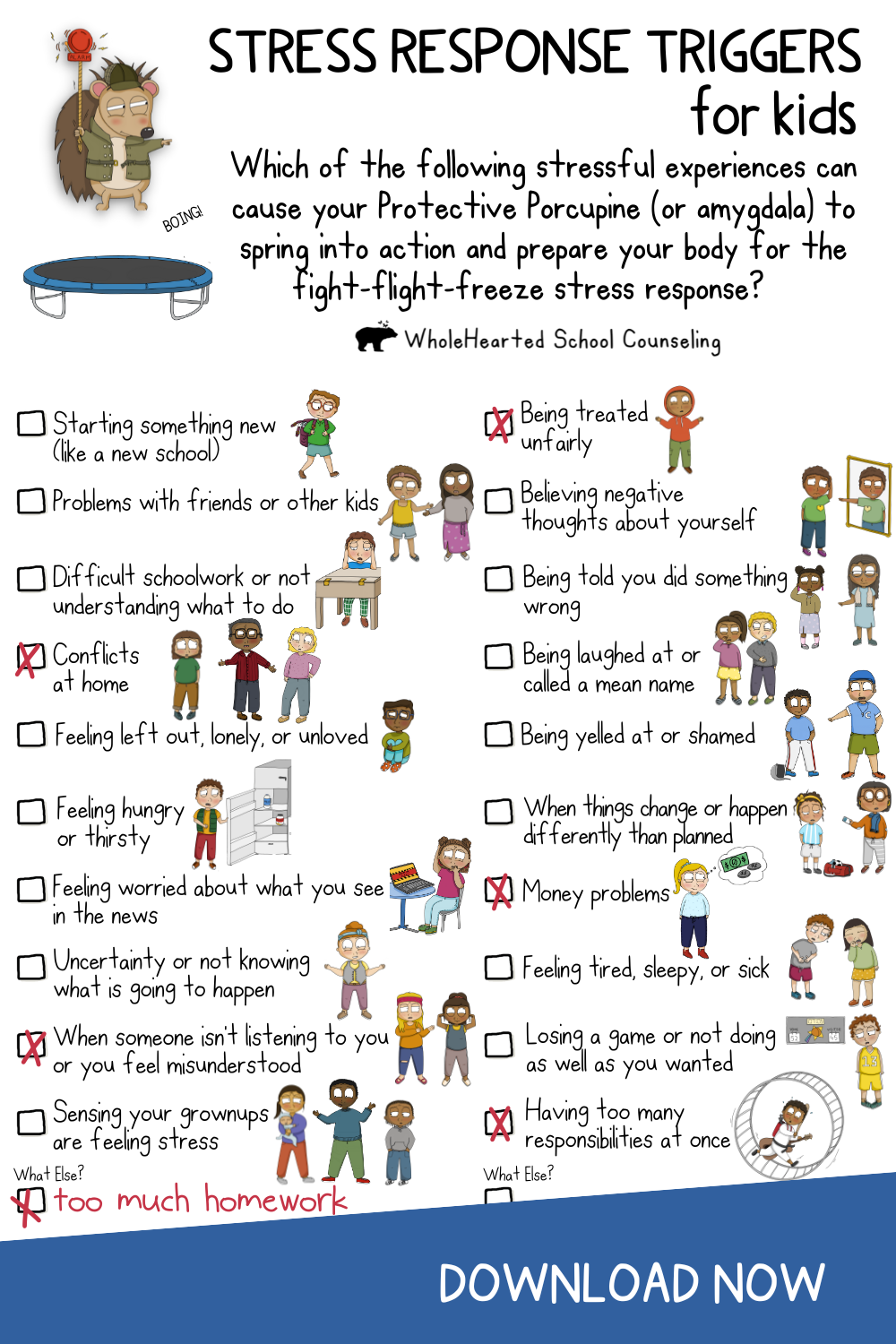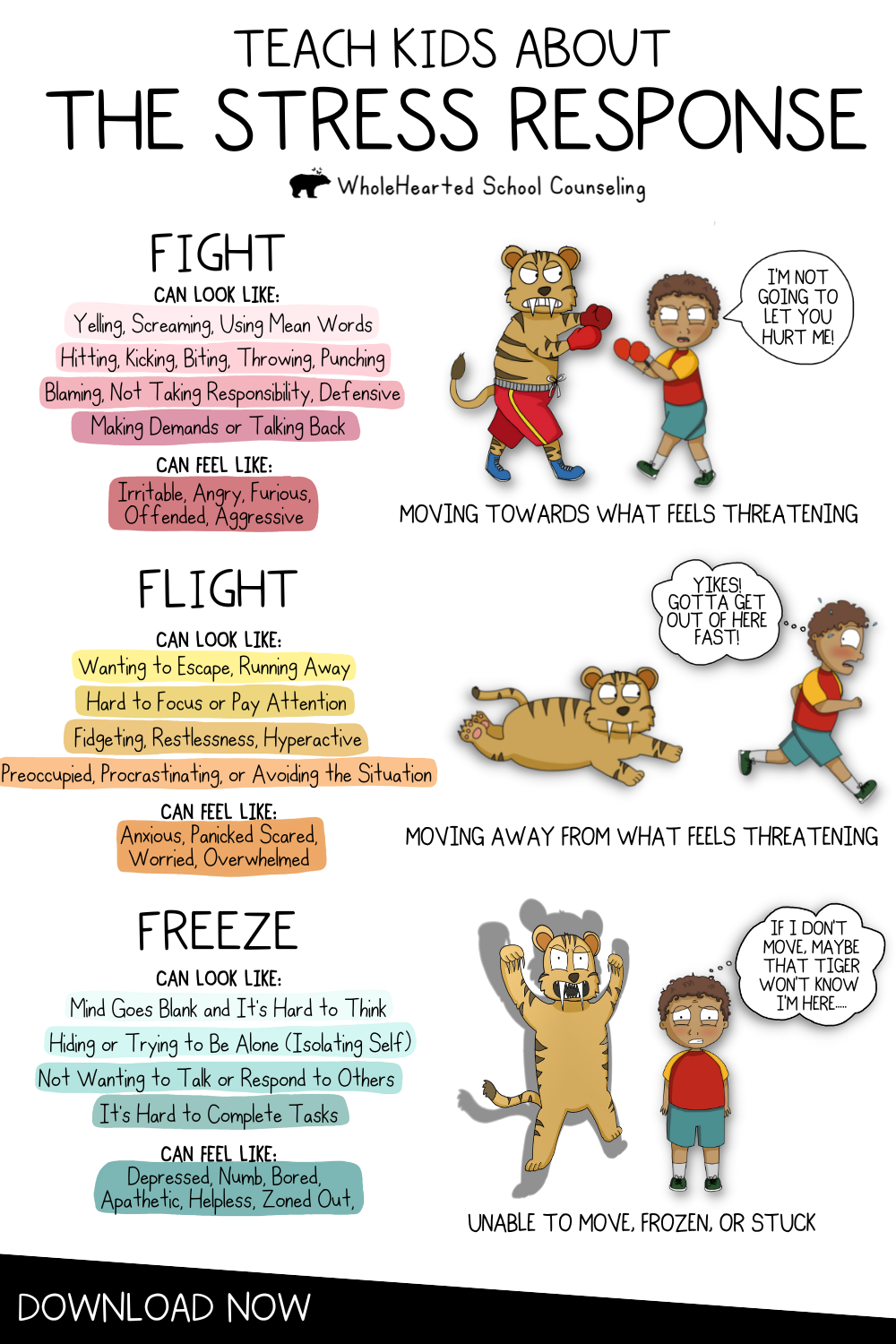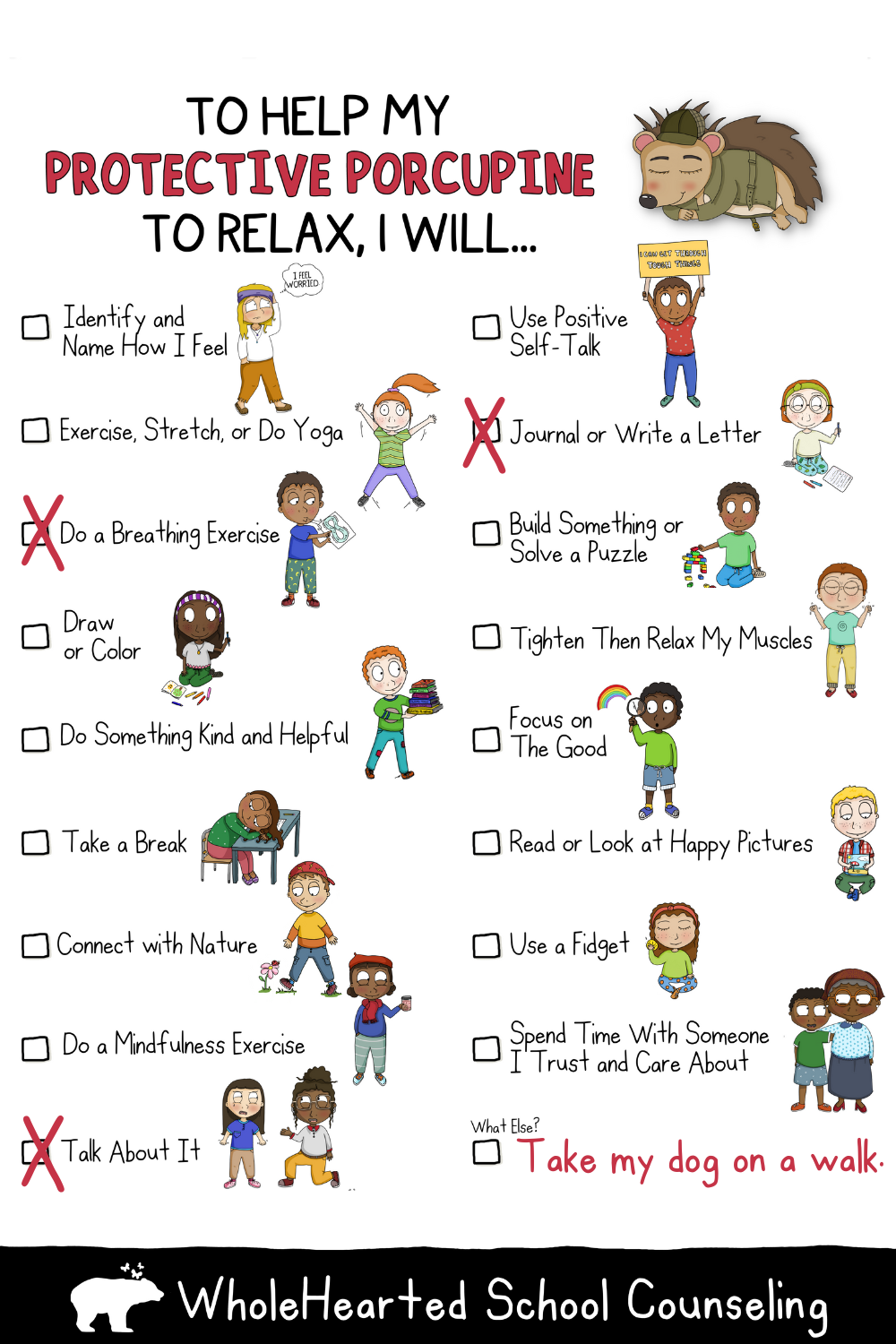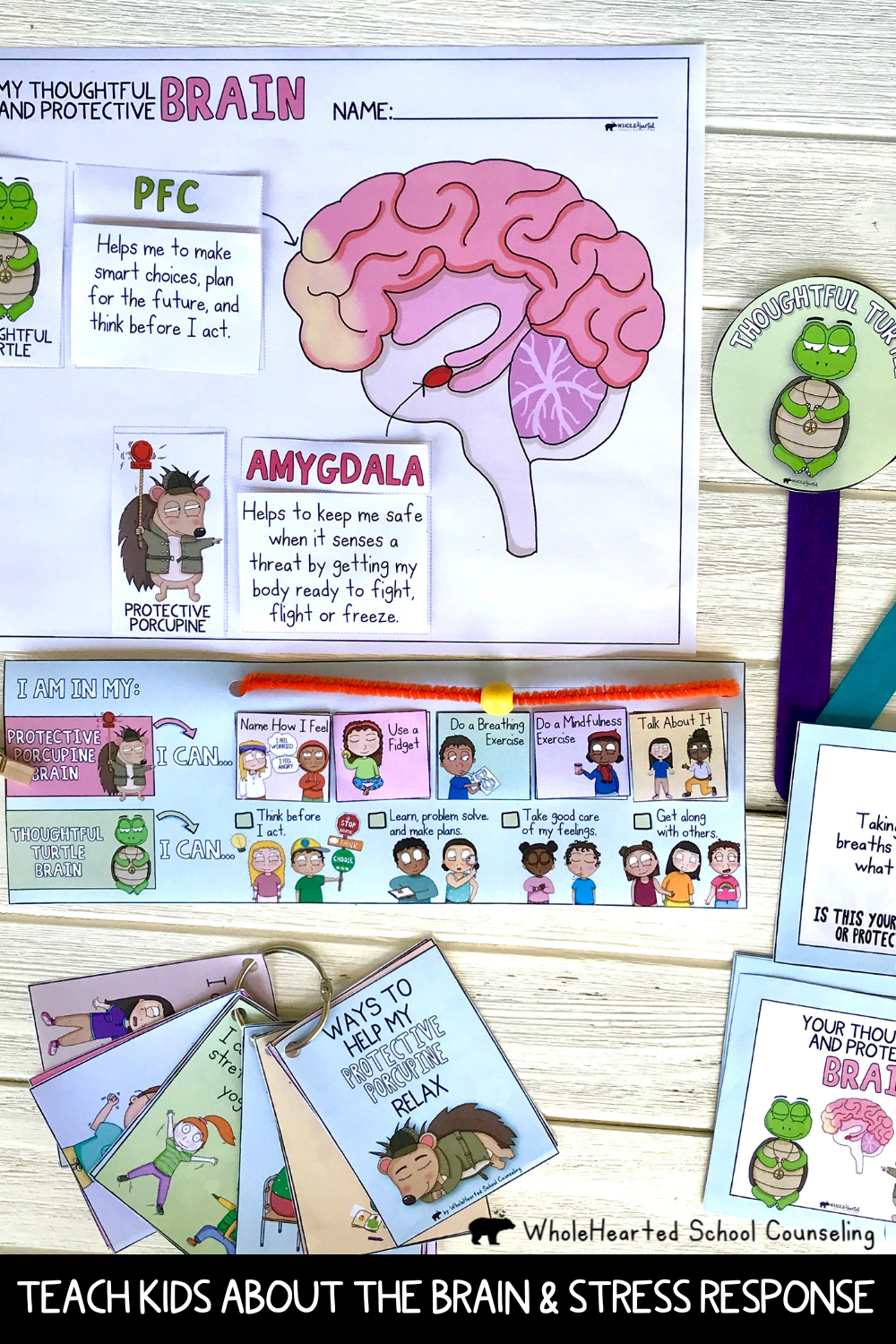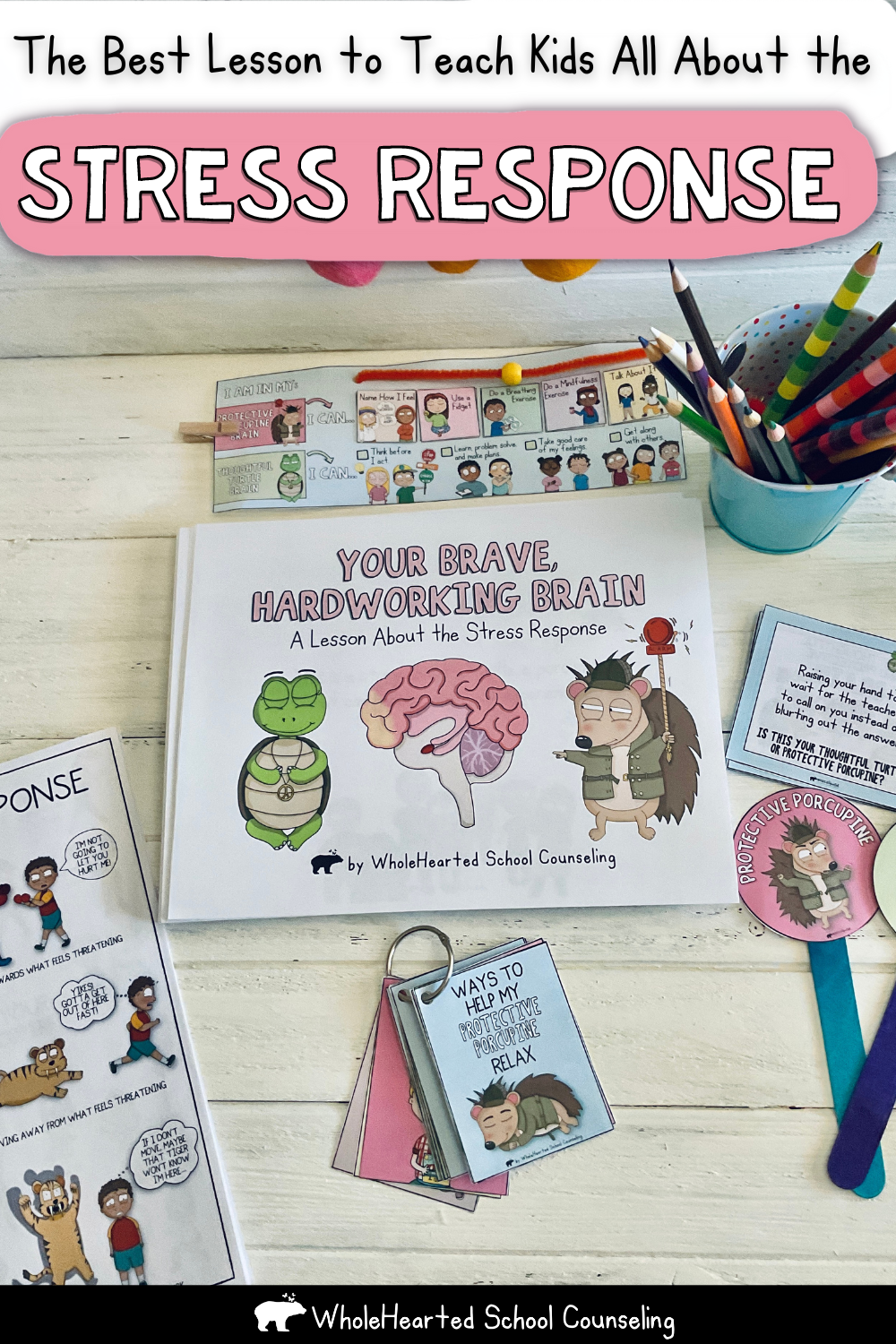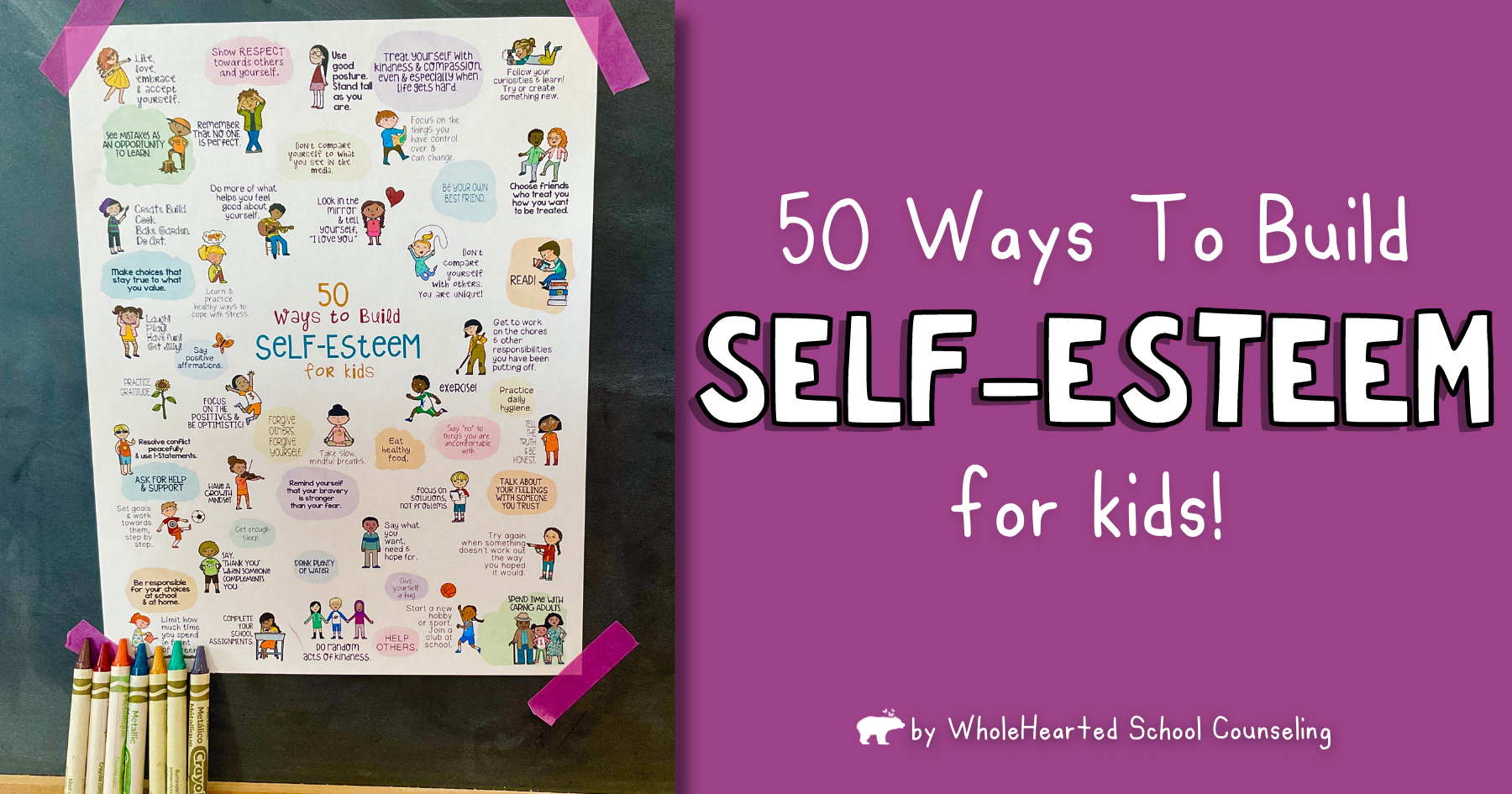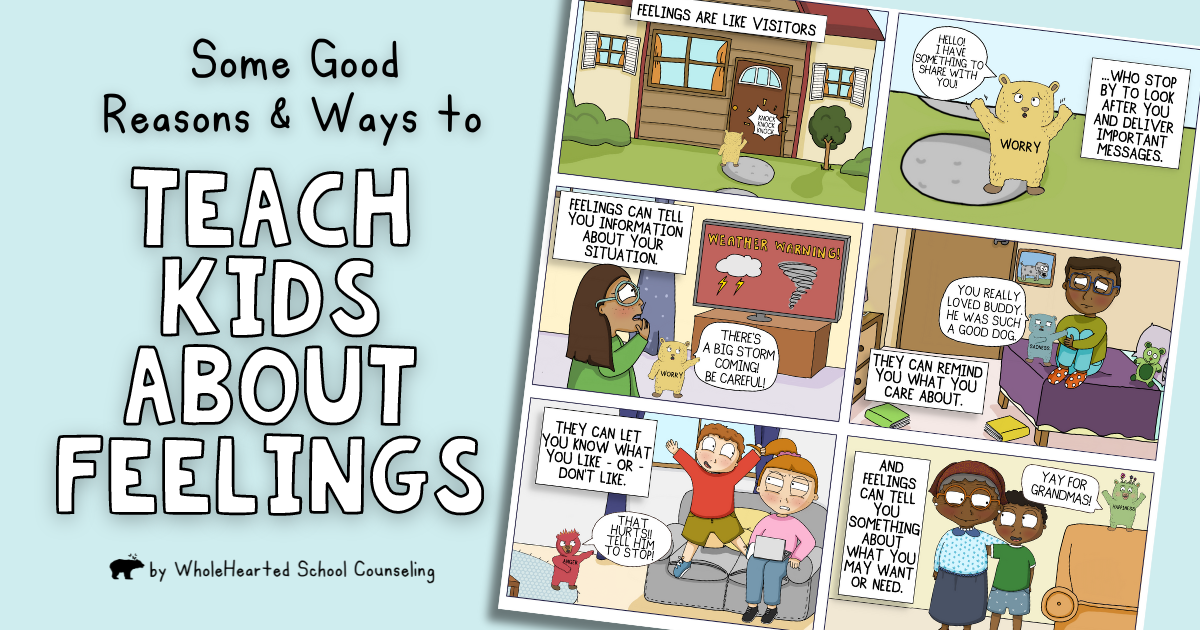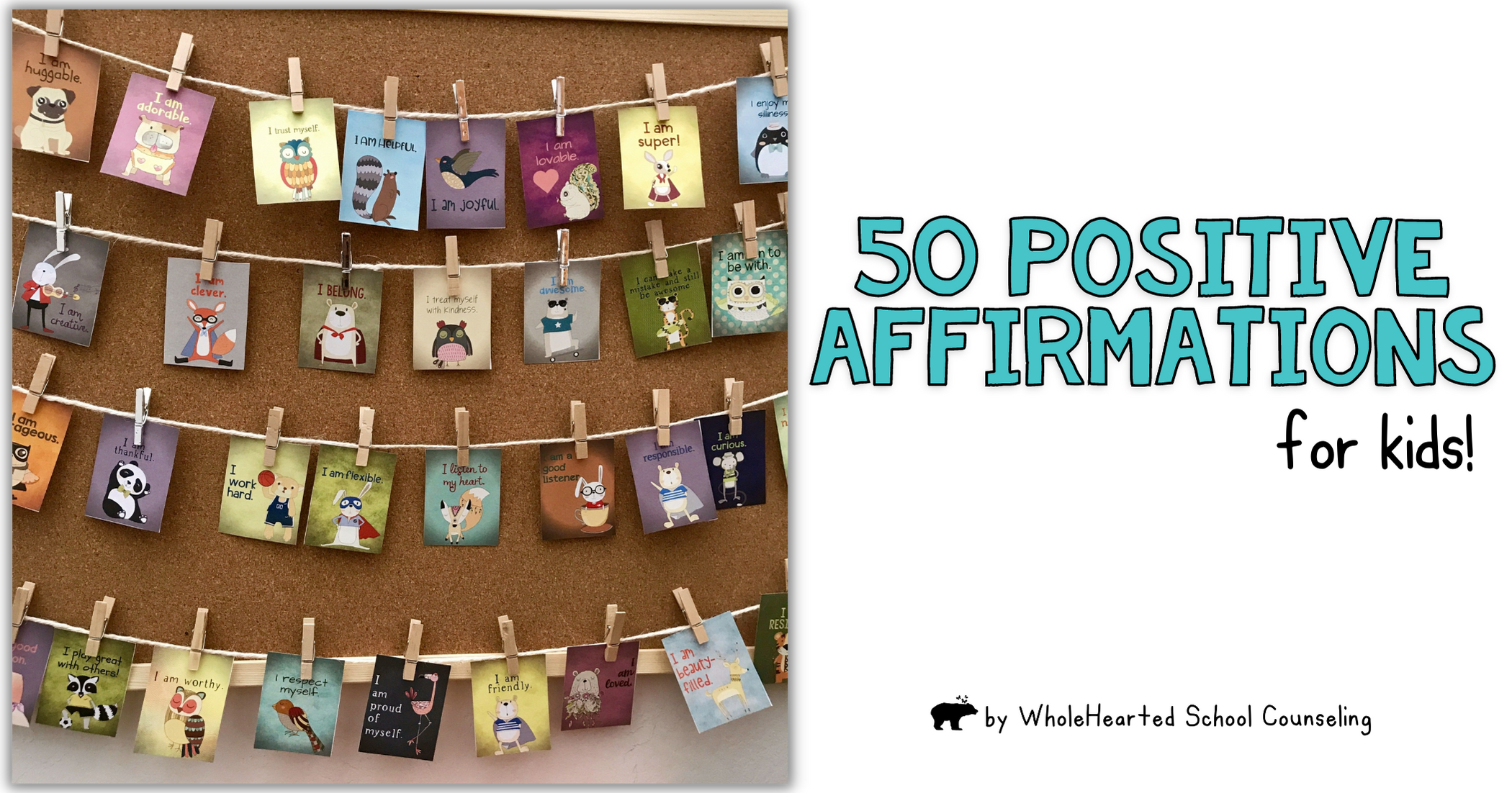WHY IT’S SO IMPORTANT TO TEACH KIDS ABOUT THEIR BRAINS AND THE STRESS RESPONSE
The more we learn about how behavior is a form of communication, the more we understand the importance of teaching kids about the stress response and their brave, resilient brains. More than ever, kids and teens are under a significant amount of stress. Which means lots of anxious, angry, overwhelmed, and hopeless feelings. These are emotions that make it hard to learn, be thoughtful, and make good choices. Understanding why big feelings like anxiety, anger, and apathy feel they way they do, and where the physical symptoms originate from, empowers young people to turn those feelings around.
Teaching children about the stress response and what can trigger it, helps them to better understand what’s going on. When kids feel stress, they might believe shame-based thoughts like, “there must be something wrong with me”. These types of thoughts can be debilitating.
Rather, we need to teach kids that actually, it’s perfectly understandable why they are feeling the way that they are. In fact, there is nothing wrong with them. Stress is a normal response to challenge and changes. Big emotions are a protective response.
When stress becomes chronic, too big, or too much, it can overwhelm a young person’s ability to cope. Although we can’t prevent children from feeling stress, we can help children and teens better understand their triggers and notice their physical signals. Plus, we can help them build and practice healthy coping tools.
TEACHING STUDENTS ABOUT THE BRAIN
The best way to teach kids about the stress response, is to focus on the brain. In particular, it’s essential to underscore the roles of the prefrontal cortex (PFC) and amygdala. So let’s break it on down to the Cliff’s notes version.
The PFC is the part of your brain that controls your thoughtful actions and executive functioning, like planning, goal setting, self-control, metacognition, etc.
(CRAZY SIDE NOTE: Amazingly, this part of the brain is not fully developed until age 25! That means that the impulsive, hand to the forehead actions that kids and teenagers make over and over are completely normal. (Phew). In fact, they are one hundred percent expected. So when you have that thought, “I can’t believe he or she did that….again”, you can remind yourself that his or her prefrontal cortex is not fully developed yet.)
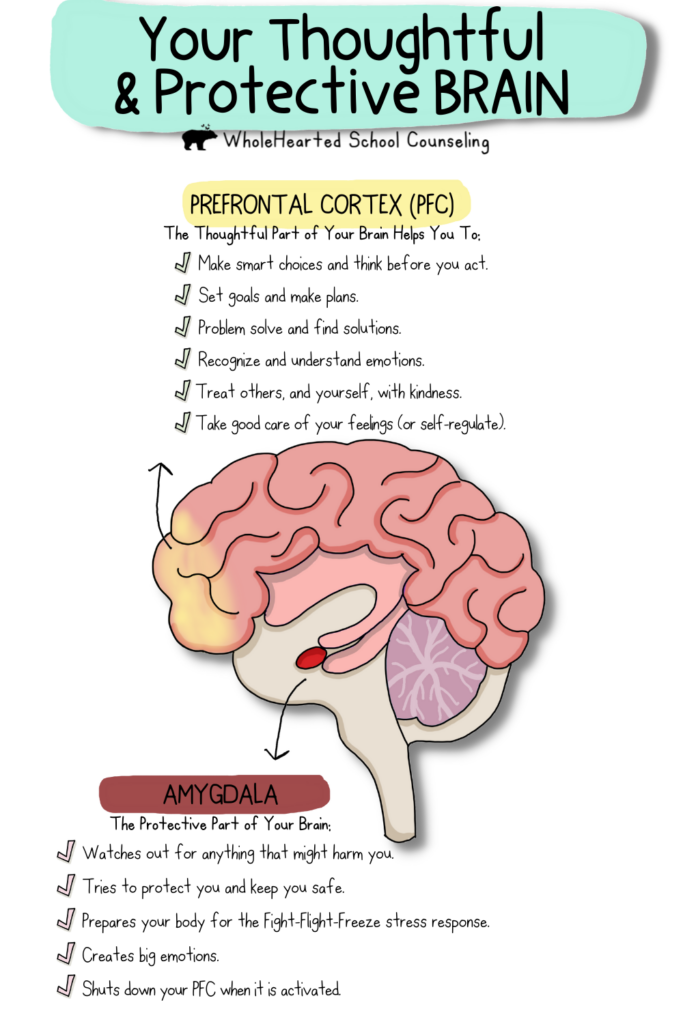
The second area of the brain to teach kids about is the the amygdala. The amygdala’s main function is to protect you and watch out for anything that might harm you. In other words, the amygdala’s job is to keep you safe. When you experience a potential stressful, frightening or dangerous event, the amygdala naturally instigates the stress response, also known as the fight-flight-freeze response.
Some of the physical signs that your amygdala has triggered a stress response are:
- muscles tightening
- face getting hot and red
- belly rumbling and grumbling
- heart going pedal to the metal around a racetrack
- thoughts crisscrossing through a maze with no end
TEACHING KIDS ABOUT THE STRESS RESPONSE
Below is a brief synopsis of Your Brain and the Stress Response story-lesson:
The Thoughtful Turtle
The Thoughtful Turtle represents the PFC, or Prefrontal Cortex, helping you to stop, think, then choose what to do. This part of the brain is encourages you to make smart choices, set goals, make plans, problem solve and find solutions. Additionally, the Thoughtful Turtle helps you to recognize and understand emotions, treat others, and yourself, with kindness, and take good care of your feelings.
The Protective Porcupine
Then there is the Protective Porcupine. The Protective Porcupine represents the amygdala, or the protective part of your brain. This part of the brain watches out for anything that might harm you. It protects you and tries to keep you safe. And your Protective Porcupine will spring into action and start doing its job when it senses you are under stress.
FIGHT-FLIGHT-FREEZE STRESS TRIGGERS FOR KIDS
There are tons of different stressors for kids that activate the Protective Porcupine to start doing it’s very important job. Stress triggers can include:
- Starting something new
- Feeling hungry or thirsty
- When someone isn’t listening to you
- You feel misunderstood
- Being yelled at or shamed
- Problems with friends of other kids
- Being told you did something wrong
- Losing a game,
- Sensing your grownups are feeling stress.
When you experience a stress trigger, your Protective Porcupine is called into action! It tells the body to release chemicals that are experienced as big emotions. This is the Protective Porcupine preparing your body for the Fight-Flight-Freeze stress response.
FIGHT:
It may look like yelling, screaming, biting, throwing, punching, not taking responsibility, or talking back. You will likely feel irritable, angry, furious, offended, and aggressive. If a child goes into the stress response
FLIGHT:
It may look like wanting to escape, run away, having a hard time focusing or paying attention. It can also manifest via fidgeting, restlessness, or hyperactive behavior. You may feel anxious, panicked, scared, or worried.
FREEZE:
It may look like hiding or trying to be alone. Your mind could go blank or you have a hard time thinking or completing tasks. You could feel depressed, numb, bored, helpless or zoned out.
WHEN THE AMYGDALA IS DOING ITS JOB
When your Protective Porcupine does its job and takes over, it might feel like you are out of control. This is because, well, in many ways you are: the Thoughtful Turtle sort of hides or goes into its shell. That’s why it can be really hard to learn, focus, and make “rational” or helpful decisions!
One of the most important things that Your Brain and the Stress Response teaches, is that for some people, their Protective Porcupine is so hardworking and brave, that sometimes it can be super-sensitive. Which means at times, can take its job a little too seriously. So that even when there’s not a dangerous threat directly in front of you, your Protective Porcupine might still act as if there was!
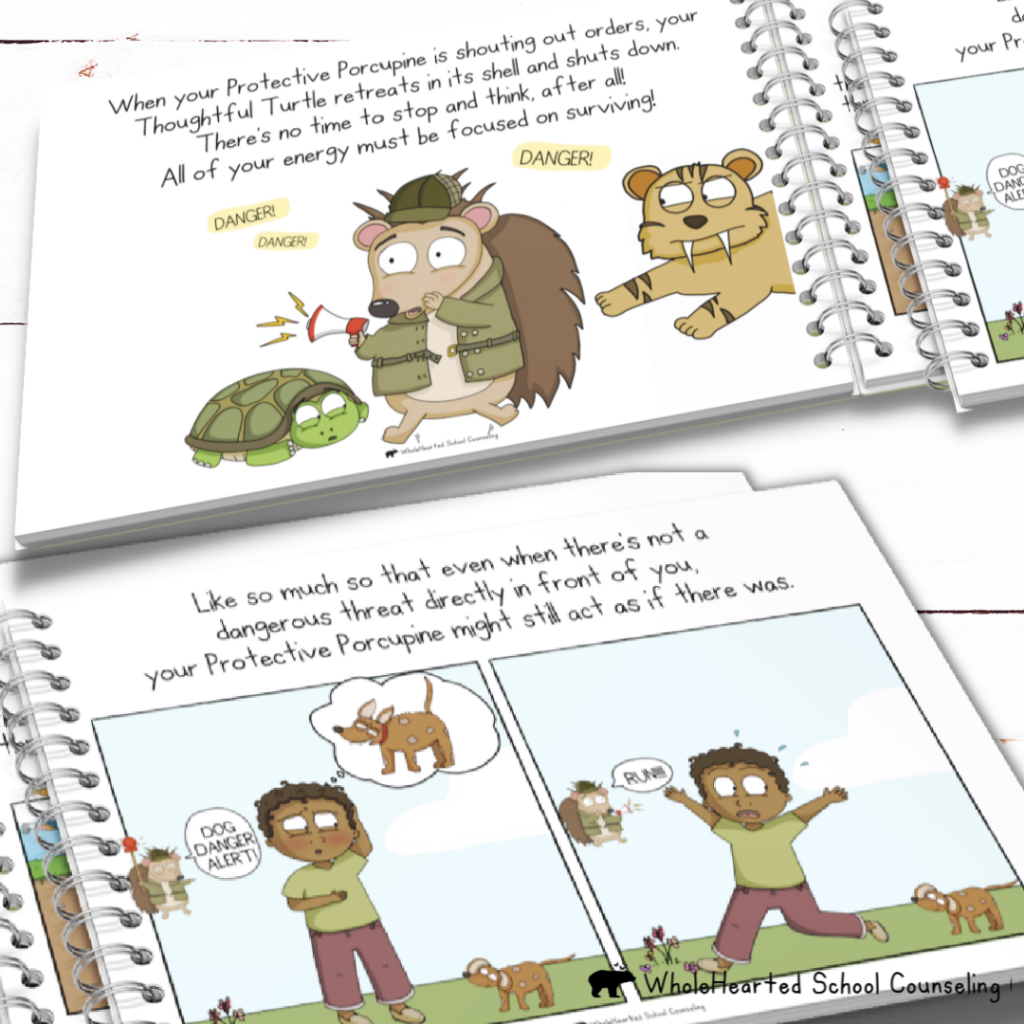
If your Protective Porcupine works overtime, either because you are dealing with really tough, stressful stuff, day after day, or because it’s super-sensitive and can take its job a little too seriously sometimes….you might have a hard time learning, focusing or problem-solving. You might do things without thinking first. Or have trouble getting along with others. Perhaps, you might feel angry, anxious, helpless, or sad a lot.
This is where using healthy coping tools come in handy. You see, there are things that you can DO to help your Protective Porcupine to relax, so that your Thoughtful Turtle can come out of hiding.
HOW COPING TOOLS HELP YOU MOVE THROUGH THE STRESS RESPONSE
The last part of the Your Brain and the Stress Response lesson focuses on teaching kids different coping skills they can use to move through the stress cycle. It includes calming strategies like exercise, taking deep breaths, doing something creative, crying, laughing, and connecting with those you care about. Moreover, the simple act of just noticing when your Protective Porcupine is on high alert, doing it’s “alarm thing,” is a coping tool in and of itself, as well. As the phrase goes, “you have to name it to tame it.”
Check out the check-list below to see some of different self-regulation actions that can help.
YOUR BRAIN AND THE STRESS RESPONSE ACTIVITIES
In addition to the story-lesson, the Your Brain and the Stress Response lesson also includes lots of hands on activities to help children recognize when their Protective Porcupine is hard at work. There are also engaging activities, tools, and worksheets that reinforce what they can do get their Thoughtful Turtle back in operation.
Activities include:
- visual support checklists and posters
- coping tool sorting cards
- a customizable feelings check-in slider with coping tools desk/table reference
- fun worksheets
- access to a digital spinner with 30 questions and prompts that reinforce the main ideas of the lesson.
HOW IT HELPS YOU, TOO
When we teach kids about the stress response, not only does it benefit them…it also benefits us adults, too. At the most basic level, we experience the stress response just like kiddos. Being able to externalize the stress response, say in the form of an adorable porcupine, might even be helpful for you, too.
(I actually “warn” my family all the time that my Protective Porcupine is on the loose more times than I care to admit.)
Really, probably the biggest difference between adults and kids, as far the stress response goes, is that adults might have an easier time getting back into the prefrontal cortex part of their brain, if only because, (fingers crossed), it is fully developed.
Also, being aware that some children might have a more active and protective amygdala, helps us to respond in more patient and empathetic ways. So when a child is “acting out of control”, rather than labeling them as “defiant” or hyperactive” for instance, we can consider that his or her behavior is communicating “I’m having a stress response right now!” or “My Protective Porcupine is just trying to keep me safe!”. This can make it easier for us to better support them, instead of getting our very own Protective Porcupine springing into action, too!.


